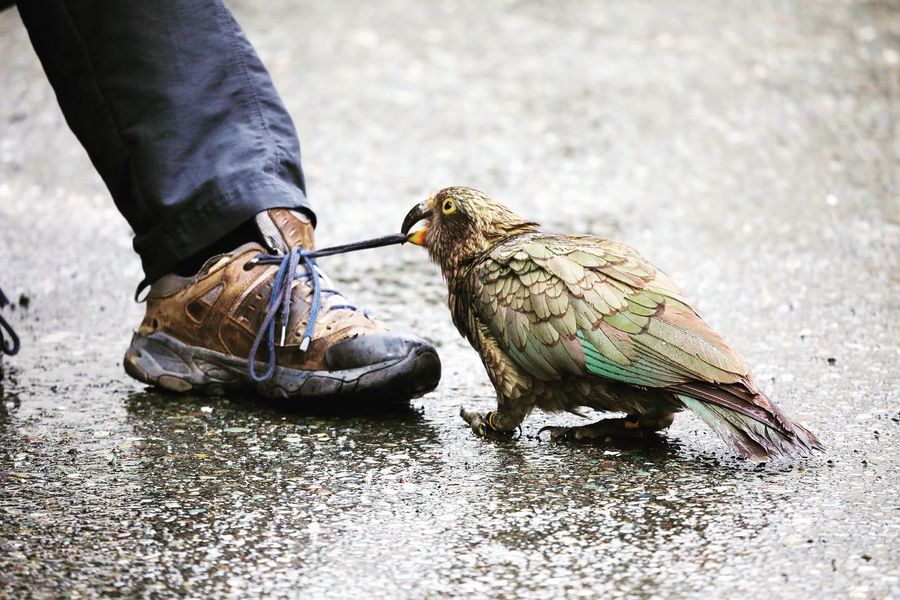
Behold, the audacity. / Photo by Mike White
 Behold, the audacity. / Photo by Mike White |
Kea aren't kept as pets, and they're not very flashy, so it isn't exactly surprising that they're not well-known in the US. But it's a shame, because these fascinating birds are actually quite unique in a number of ways. One of the three surviving species in Strigopoidea, an unusual superfamily of large parrots endemic to New Zealand, kea are the world's only alpine parrots and the only parrots known to eat meat in the wild, even attacking livestock on occasion.
They are a species of interest to scientists because, like a number of parrot species, they show signs of unusually high intelligence and because, unlike other parrots, they appear to lack neophobia. In other words, they're smart, curious, and not afraid to try new things, which makes them great subjects for studying animal cognition and behavior. Research shows that they can use tools, solve logical puzzles, use probability to make predictions, and cooperate with each other to reach goals. They also apparently engage in a behavior that researchers have compared to infectious laughter. Which makes a lot of sense, considering their main claim to fame outside of the scientific community is for being incorrigible tricksters who are constantly pranking humans.
Some examples of classic kea shenanigans and tomfoolery:
Sadly, between their penchant for property destruction and their habit of attacking livestock, they were historically seen as pests. The New Zealand government had a bounty on kea from the 1860s to 1970s, during which time approximately 150,000 kea were killed. They have been a protected species since 1986, but there are still instances of humans deliberately killing kea. In addition to human persecution, kea are also vulnerable to mammalian predators*, ingestion of lead, and exposure to poison used in pest control, either by directly eating from traps or by eating animals that have been poisoned. Recent estimates place the current kea population at 3000-7000.
Fortunately, the reputation of the kea has greatly improved in recent decades. For many in New Zealand, protecting endemic species like kea is a matter of national pride. And, although kea's impish behavior may sometimes inconvenience people, many now appreciate their endearing playfulness and are able to see the humorous side of their more troublesome antics. They were even voted New Zealand's bird of the year in 2017. Here's hoping their improved social standing will lead to greater interest in their preservation as a species.
| Gallery of Impudence | |
|---|---|
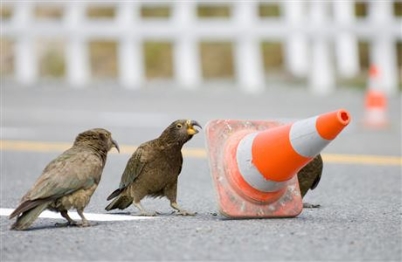 Troublemakers obstructing traffic / Photo by Andrew Walmsley |
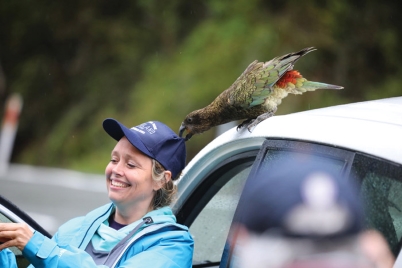 A hardened criminal at work / Photo by Mike White |
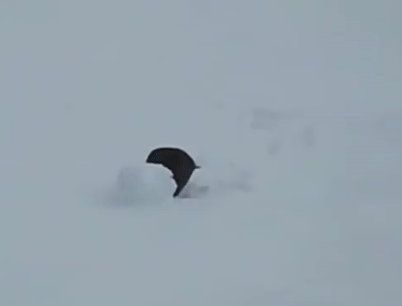 "Innocently" playing in the snow? Don't fall for the ruse! Source |
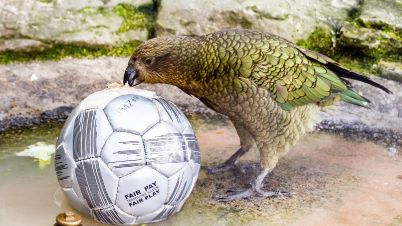 This ball was probably stolen from some poor child. The absolute fiend. / Photo by Doris Meta Franz |
* This is a common problem among vulnerable and endangered species in New Zealand. Prior to the arrival of humans on the islands, the only land-dwelling mammals were bats, and the only predators on land were birds of prey. As a result, endemic species have evolved few, if any, defense mechanisms that are effective against mammalian predators. (return)
| About the Author | |
|---|---|
|
Jora Anderson is a first year engineering student (CSE pre-major), but she was close to completing an art degree before she dropped out of school and moved to the San Francisco bay area. After a few years of working at an art education facility at night and managing apartments for a low income housing nonprofit during the day, she decided she wanted a job that simultaneously fulfilled her need for intellectual stimulation and creative problem solving while allowing her to contribute to the greater good. She hopes someday to help develop tools for education and/or accessibility for disabled people. In her spare time, she enjoys knitting, ceramics, tabletop RPGs, travel, going to concerts, cycling, spending time in nature, and learning as much as she can about the nature of the universe. She is particularly interested in astronomy and evolutionary biology, especially pertaining to the connection between birds and non-avian dinosaurs. She has been interested in New Zealand wildlife for a number of years and was fortunate enough to have a chance to see all three of their endemic large parrot species -- kea, kākā, and the critically endangered kākāpō -- during a trip to Dunedin in 2018. Sadly, the kea did not steal anything from her. |
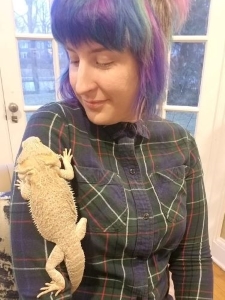
|